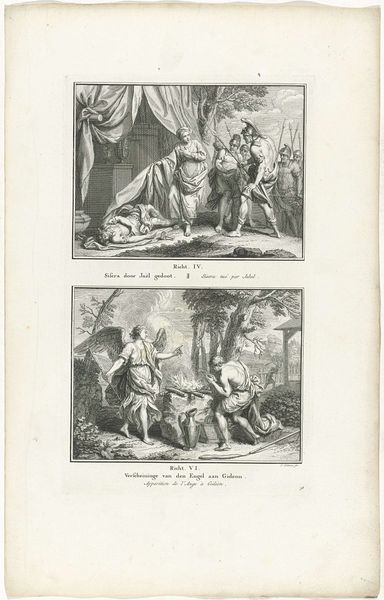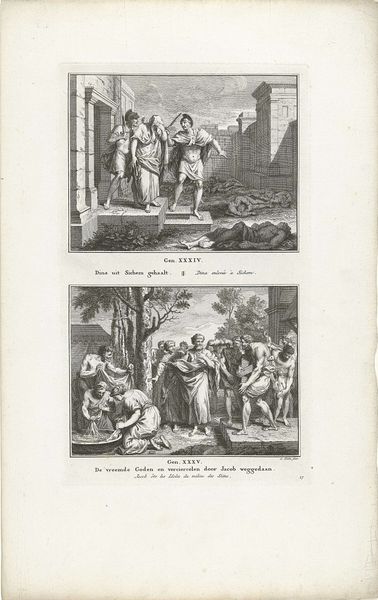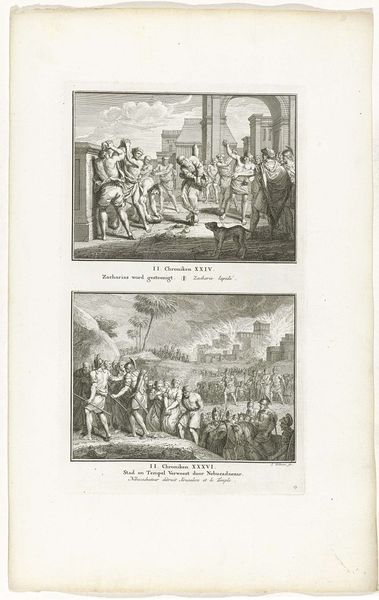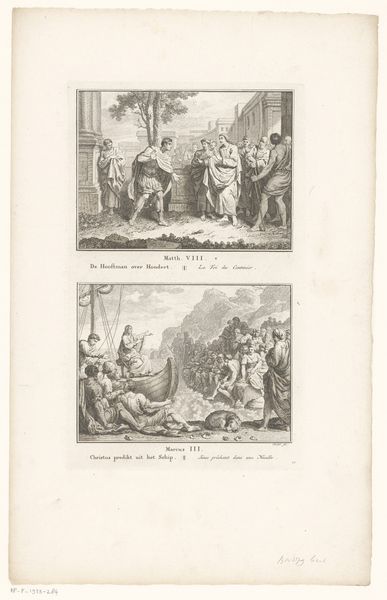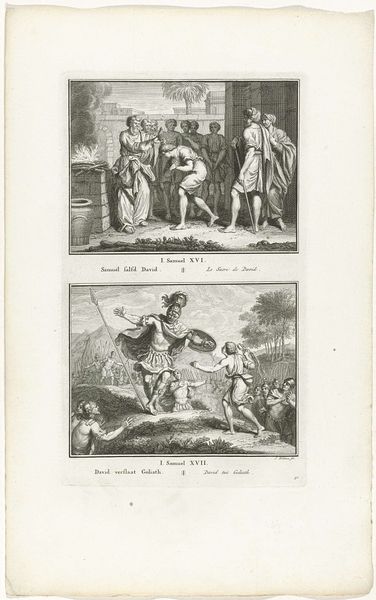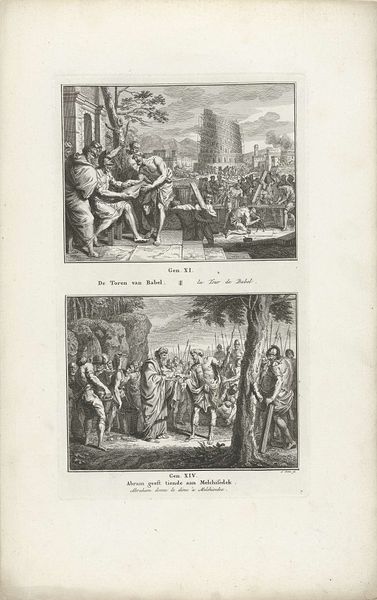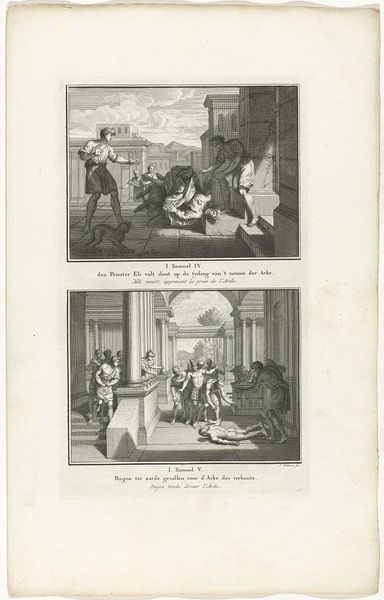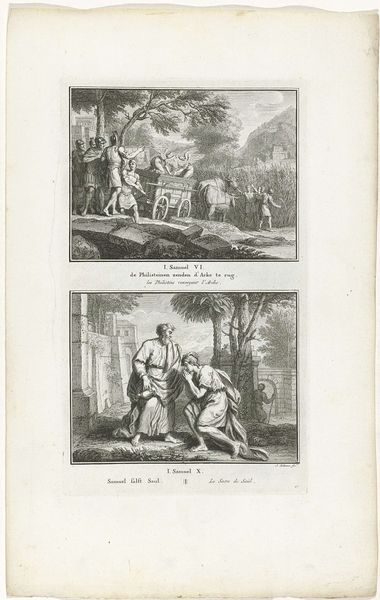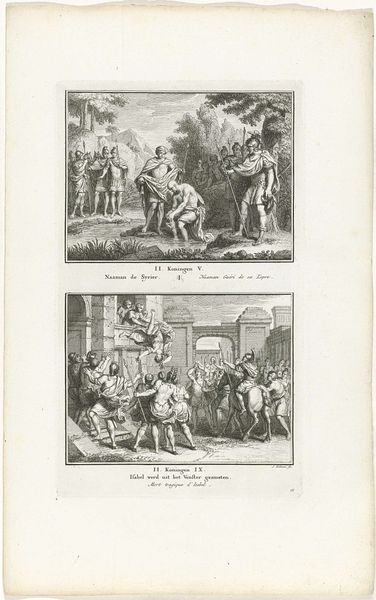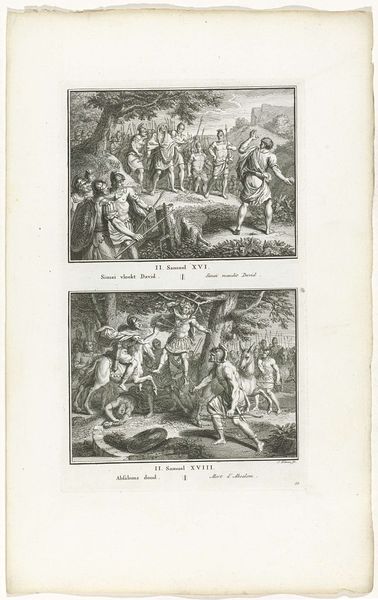
Dimensions: height 327 mm, width 195 mm
Copyright: Rijks Museum: Open Domain
Editor: This is "Jeremia wordt in een kuil geworpen en het visioen van Ezechiël," or Jeremiah Thrown into a Pit and the Vision of Ezekiel, an engraving made in 1791 by Jacob Folkema. It has a sort of stark quality because it is black and white and highly linear, almost like a pen-and-ink sketch. I’m curious, what elements of the print's design strike you? Curator: Well, considered purely from a formalist perspective, the organization of the print into two distinct, framed panels demands attention. Note the Baroque influences at play through dynamic diagonal compositions that direct the gaze throughout both narrative moments. We see it both with the armed guards and Jeremiah, as well as with Ezekiel at the right, leading our gaze. Editor: So you are less focused on the stories being told, and more about the overall balance? Curator: Precisely. The artist used line and light. Look at the varied thickness of lines, for instance, that create a sophisticated interplay of light and shadow and volume across the figures. Also notice the relationship of depth to shallow, which leads to further dramatic effects. And how does the symmetry in the work inform the piece? Editor: Hmmm...while each panel feels self-contained, I notice mirrored directional movements—the eye is always led back into the frame. This helps balance both narratives. Curator: Good point! The artist guides our reading experience with this method. I would note the overall organization relies on calculated balance to produce a cohesive visual, rather than just two sequential biblical stories. I have not noticed it so much before today. Thank you. Editor: Likewise, your focus on composition over subject really opened my eyes to how much the layout enhances the storytelling, a critical formal quality.
Comments
No comments
Be the first to comment and join the conversation on the ultimate creative platform.

